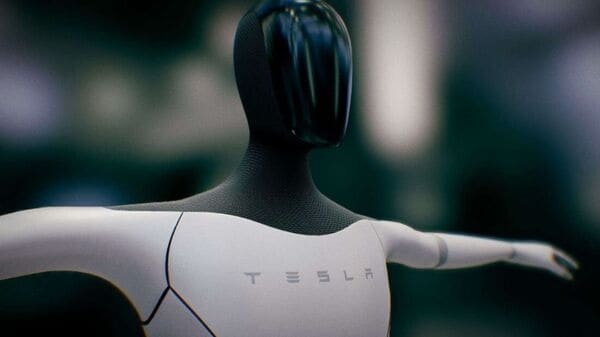With the addition of six cameras to its humanoid robot, the GR-1, Fourier Intelligence has upgraded its robotics capabilities and achieved notable progress. This new feature gives the robot a full 360-degree view of its environment. This choice is a break from conventional robotic designs, which mostly depend on a mix of lidar, radar, infrared, and cameras for navigation and spatial awareness. Rather than utilizing other methods, Fourier’s GR-1 relies solely on vision, relying on sophisticated computer vision technologies to efficiently comprehend and react to visual cues.
The rationale behind Fourier’s adoption of a vision-centric design is reminiscent of Tesla’s strategy with its vehicles. Tesla notably removed radar and ultrasonic sensors from its electric vehicles (EVs) in favor of a camera-based system for its Autopilot feature. This shift was aimed at streamlining the sensor suite while leveraging advanced machine learning algorithms to enhance autonomous driving capabilities. The success of Tesla’s approach has sparked interest and confidence in the viability of camera-centric systems for navigating complex environments with precision and reliability.
By equipping the GR-1 robot with six strategically placed cameras, Fourier aims to achieve a comprehensive understanding of its surroundings. These cameras are designed to capture visual data from all angles, enabling the robot to perceive obstacles, navigate through environments, and interact with objects with enhanced accuracy and efficiency. This approach not only simplifies the robot’s sensor configuration but also reduces hardware complexity and potentially lowers production costs, making it more accessible for broader applications in robotics.
The integration of six cameras into the GR-1 underscores Fourier’s commitment to advancing the capabilities of humanoid robots through innovative technology. Each camera serves a specific function in providing real-time visual information, which is processed through sophisticated algorithms to support autonomous decision-making. This capability is crucial for applications ranging from industrial automation and logistics to healthcare and personal assistance, where precise navigation and interaction capabilities are essential.
The switch to a vision-only strategy is not without difficulties, though. Even though cameras are excellent at identifying things and capturing comprehensive visual data, they might have problems in unfavorable situations like dim lighting or bad weather. On the other hand, lidar and radar sensors are well-known for their capacity to offer object detection and depth perception in difficult settings when visual data alone might not be sufficient. When adopting vision-centric designs, Fourier and other robotics manufacturers continue to prioritize achieving strong performance under all environmental situations.
Fourier’s decision-making process was impacted by Tesla, which underscores a larger industry trend toward streamlining sensor designs and utilizing computer vision technology to their fullest. Robotics manufacturers may be able to increase system dependability, improve scalability, and speed up autonomous technology innovation by lowering reliance on various sensor types and combining functions into camera-based systems..
In the future, Fourier’s decision to incorporate six cameras into the GR-1 will be crucial to the advancement of robots. Improvements in sensor fusion and computer vision algorithms are anticipated to increase the applicability of vision-only systems in various operating scenarios and alleviate existing drawbacks as technology develops further. Due to their increased autonomy, efficiency, and flexibility, robots thanks to their evolution could completely transform a number of industries.
The choice made by Fourier Intelligence to add six cameras to its GR-1 humanoid robot is indicative of a strategic commitment to utilizing state-of-the-art technologies to improve operational capabilities and situational awareness. Driven by the autonomous driving improvements made by Tesla, Fourier hopes to lead the way in robotics as well, promoting the use of vision-centric technologies that revolutionize the way robots see and engage with their surroundings. The incorporation of vision-only techniques, such as those found in the GR-1, could open up new possibilities and applications across a range of industries, influencing the direction of robotics and automation as computer vision technology continues to progress.
If you like the article please follow on THE UBJ.
